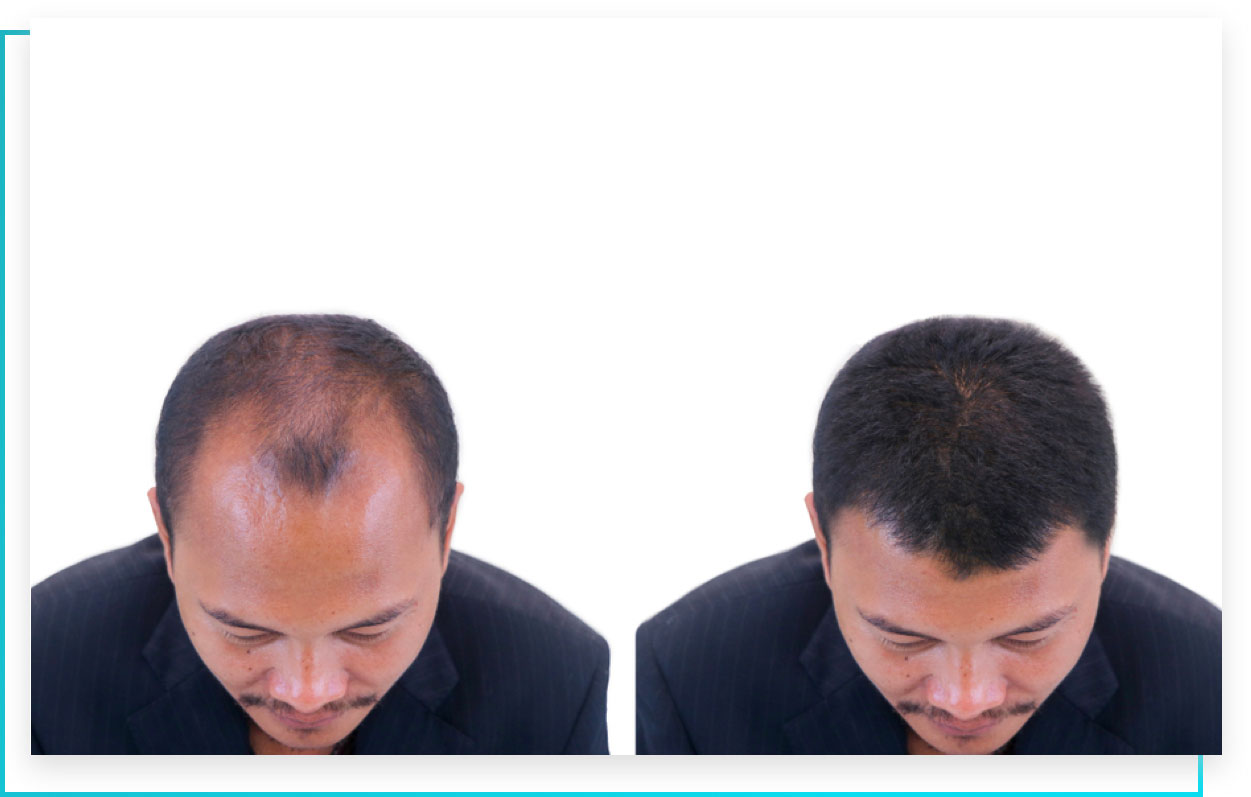Hair transplantation is a very special medical procedure, that requires a high level of carefulness and professionalism. The procedure starts with the phase when a plastic surgeon or dermatology specialist cleans the patient’s scalp surface to inject the medicine that numbs the back of the patient’s head. There are two main methods for transplant – FUT (follicular unit transplantation) or FUE (follicular unit extraction)
The process may take from 4-8 hours depending on the size of the area subject to transplantation. In most of the cases the patients are ready to return to work in 2-5 days after the operation.

The requirement for hair transplantation surgery is up to the permanency of hair on some areas of scalp. While some hair on your scalp has a transient life span, other types of hair tends to survive in a lifetime. Studies show that permanent hair can be moved to any part of the body where they can continue growing and behaving as if it is still in its original site.
Hair transplant is a safe and minor surgical procedure that includes harvesting the donor hair from the back or sides of the scalp (donor area), and relocating them into the balding or thinning areas of the scalp (recipient area). In 1939 Dr. Okuda, a Japanese dermatologist reported on the first study, referring to so called “The punch technique” of hair transplantation. This was firstly applied to the scalp with severe singes on patients’ skin, and a considerable growth of hair was noticed.
Five years later, Dr. Tamura tried a micro grafting technique to restore female pubic hair among the Japanese women society. Later, in 1952, Dr. Norman Orentreich from New York, performed hair transplantation in the western world. His findings were published in 1959 and since that time, hair transplantation is more commonly used to cover the balding areas. For 30 years, the techniques have not shown any considerable improvement.
Only in 1990, an innovative technique was firstly applied providing natural results. This hair transplant procedure was known as the Follicular Unit Transplantation (FUT) Technique.
Follicular Unit Transplantation (FUT) Technique The FUT technique provides the patient’s natural hair groupings called follicular units. These are then removed from the skin in a way that they stay intact in their genetic form. After that, they are implanted into the recipient area, according to the appropriate density, distribution, direction, angle and orientation which, surely, are important factors for natural results. In the last 10 years, the improvements in hair transplantation field have shown their benefits; for instance, concerning to implant angles and density which contribute to the natural pattern of your hair. Improvements have also been made in shortening the recovery periods and in lessening of scarring in the donor areas. With naked eyes, it is almost impossible to distinguish the difference between the existing hair and transplanted hair. The whole hair transplant procedure takes about 4-8 hours depending on the number of grafts you transplant, and people usually go back to normal duties in around 2 to 5 days after the operation. Our clinic provides you with continuous assistance and advice for you hair care.
The FUT/FUE cost for 1 graft is $1-1.5, which makes the approximate cost for 3000 grafts about $3900
Abdullah Khalf Alrajihi.
The operation was success and painless. I felt the care of the United Hair Clinic team and the doctors from the beginning till the end. I gained my self-trust back.

Armen Balyan
I must confess, I never though I would be able to recover my self confidence after losing my hair. I thank United Hair Clinic's staff and doctors for doing such a great, professional job and showing their care!

Hassan Al-Malawi.
I contacted United Hair Clinic after my friend had a successful operation. I visited Yerevan and had the operation with ease. It was an amazing medical-tourism experience.

Hakob Hovannisyan
It's tough not having thick and beautiful beard when everyone around you brags about theirs... I highly recommend United Hair Clinic, very smooth and great work. Thank you!

Muhammed Abu Al-Syuf.
It was an easy-going process! I made myself sure on everything before going to the surgery and the doctors answered to all my questions. It was a surprisingly successful result for my wife and myself. I found that I spent many years having problems with self-esteem before making this decision. It shouldn't have taken that long. Thank you!
